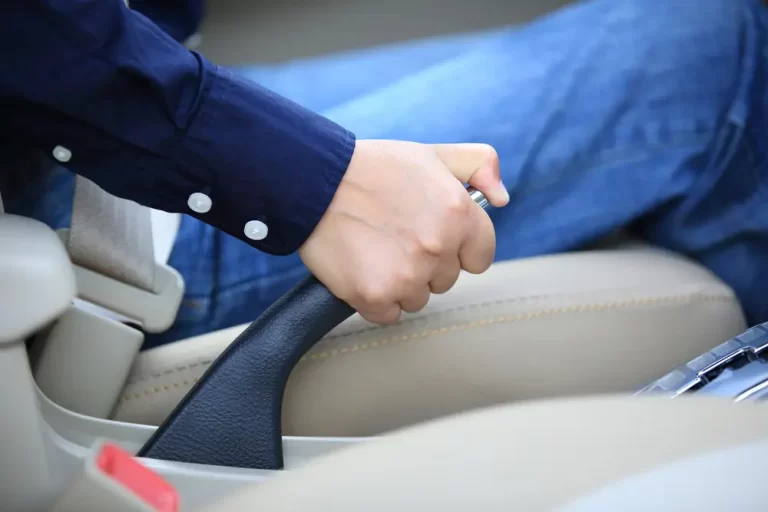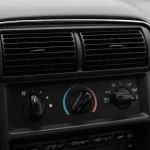If you’ve ever seen a car roll down a hill, you may have laughed or caught it on video. We always assume the driver is inexperienced or had a few too many cocktails. The truth is that this could happen to any of us. It all has to do with forgetting to engage the emergency brake when we park our car.
Why Do We Have a Parking Brake on Our Vehicles?
All vehicles have an emergency brake or parking brake. The reason manufacturers install this in their cars and trucks is to help prevent your car from rolling forward or backward when the car is in a stationary position.
The parking brake is an important component of any vehicle. It keeps your car from sliding when you park on ice or snow. It also prevents your vehicle from rolling out of your driveway when you lock it up.
Hundreds of people end up having their car damaged when it rolls out of their driveway or a parking garage. Another car comes along and smashes into it. That’s because they assume that your car has its parking brake engaged. Why wouldn’t it? It seems like common sense.
Even if you remember to pull the emergency brake when you get out of your car, you may not remember to release it when you get back in. This can be just as dangerous as not using it in the first place.
It’s Unsafe to Drive with the Parking Brake On
One of the reasons it’s so important to disengage your parking brake when you start your car is to avoid damaging your car. If you happen to drive while the emergency brake is on, you’ll likely damage your rotors, brake pads, and even your engine.
Some of the things that can happen to your car if you leave the parking brake on while in gear include:
· It can destroy your rotors and pads – When you leave the parking brake on, it creates a ton of friction when the car is in the drive. For every mile you drive with that brake on, you’re creating more damage to your brake system.
· It will cause your brake fluid to heat up – If you don’t have ample brake fluid in your car, it’ll be very difficult to stop. When your brake fluid gets too low, you’ll notice that you have to press much harder on your brake pedal to come to a stop. When you drive with the parking brake engaged, it heats that brake fluid to a point where it’s boiling. It starts to burn off and you’ll be left with little to no brake fluid. This can make it very dangerous to drive. You could end up approaching a red light or traffic jam and have your brakes fail.
· If the parking brake is engaged when you drive, all three components of your brake system will heat up. It’s never a good idea to have your car heat up. This can be especially dangerous in the summer months. If your car gets too hot, it can overheat. This can cause serious damage to your engine and transmission.
Steps to Take to Release Parking Brake
As mentioned above, all vehicles have a parking brake. If you’re one of those people that never use it, then you won’t have to worry about releasing it. (However, you will have other things to worry about!)
When it’s time to put your car or truck in gear, make sure you take a few seconds to release your parking brake. This is rather simple to do:
· Put on your seatbelt and turn the car on
· Put your foot on the regular brake and hold it
· If your parking brake is on the consoler, push the button in and pull it at the same time – this should release the brake
· If your parking brake handle is located by your left foot under the steering column, press the lever with your foot and release the brake
· Once the brake is released, put your car in gear and take off
As long as you follow these steps, you should be fine. Just make sure you reengage the lock when you arrive at your destination.
Signs that Your Parking Brake is Still Engaged
Most of the time, you’ll notice that your parking brake is still engaged in a matter of seconds or minutes. When you try to drive with the brake on, you’ll notice you won’t have much pickup. Your car will go slower and have a much harder time getting uphill. Some of the other signs that you forgot to release the parking brake include:
· You can smell a burning odor – If you drive with the parking brake on, your brake pads are going to start melting. You’ll smell a burning odor. If this happens, pull over immediately and disengage your parking brake.
· You may hear a grinding noise – Remember, when the parking brake is on, your car is going to have to work harder to accelerate. It’ll also be harder to brake. If you hear a low grinding noise, it could be a sign that your parking brake is still on.
If you notice either of these things, it’s a good idea to check to see if your parking brake is engaged. If so, follow the above steps to release it. As long as you don’t go more than an hour or so with your parking brake on, you will probably escape causing permanent damage to your brake system.
Conclusion
If you want to protect your car from rolling into traffic or slipping on a patch of ice while in park, you need to use your emergency brake. At the same time, you must remember to release it before you drive again. Leaving the parking brake engaged while driving can cause long-term and permanent damage to your brake system.
It’s easy to do and it can save you a lot of trouble down the road.



